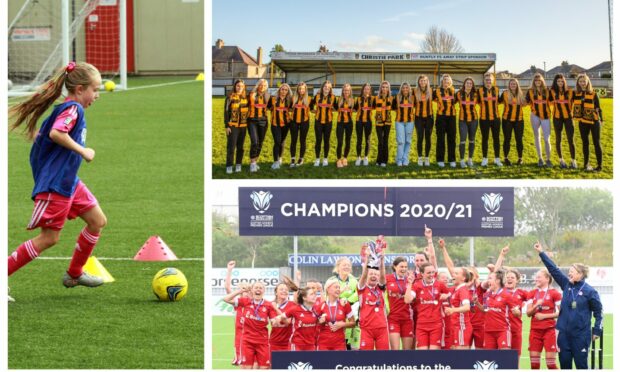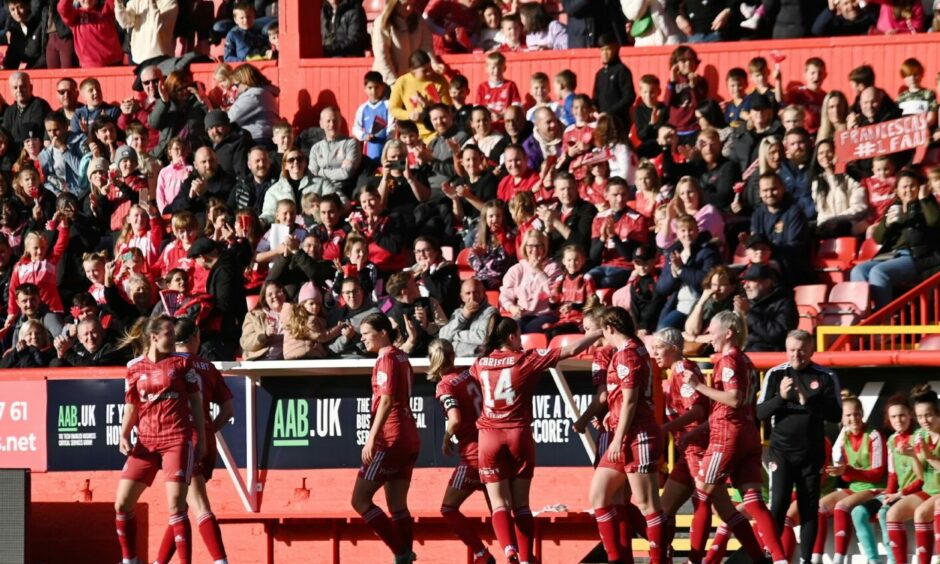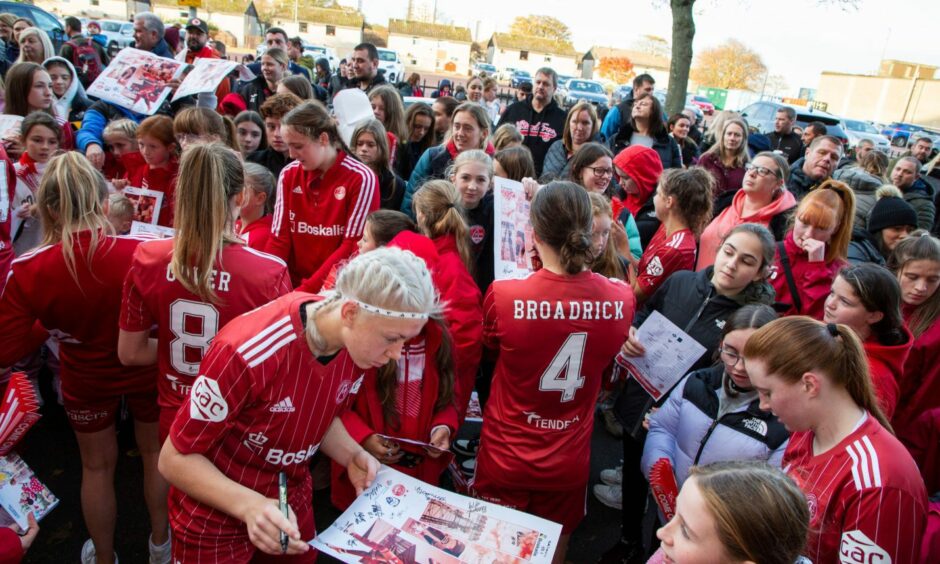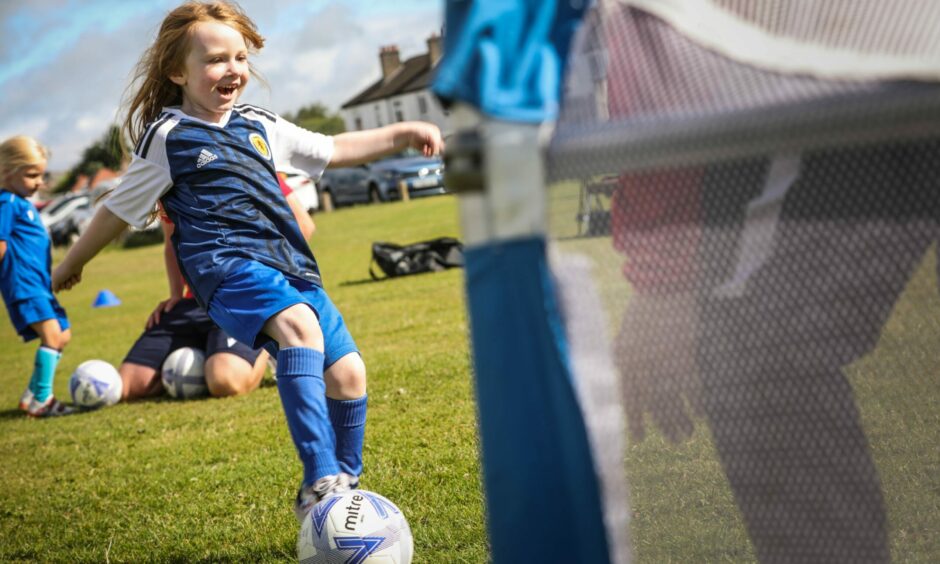How much has girls’ and women’s football grown in the north and north-east of Scotland? What impact has that had on local players and clubs?
The Press and Journal spoke to Jo Belot, the Scottish FA’s girls’ and women’s development officer for the north region, to find out more about the growth of the game.
From next season, there will be 19 senior women’s teams in the north, north-east and Highlands and Islands, spread widely across the entire geography, with teams from Orkney to Stonehaven.
Those numbers have increased from 16 over the last few months following the establishment of new teams – Inverurie Locos, Huntly, Elgin City and Dyce, who all have the backing of a men’s team.
Those new teams will join existing sides Westdyke Thistle, Buchan and Stonehaven in a new regional fifth-tier, which will kick off this year.
In the higher echelons of the league structure, Westdyke and Grampian play in SWF League One, Caley Thistle in the Championship and Aberdeen Women at Scotland’s highest level – SWPL 1.
There are also the eight teams, from Buckie to Orkney, who play in the recreational summer football Highlands and Islands league, which Belot helped establish back in 2019.
New host of teams break down barriers and create more opportunities
The growth of women’s football in the north, Belot believes, is a by-product of how the sport is continuing to gain traction around the world.
“The visibility of the game has improved for so many different reasons over a number of years,” Belot said. “It’s great to see more and more clubs up here wanting to invest in their women’s team.
“There’s been massive growth in the numbers of girls playing over the last couple of years, so the natural next step is having more women’s teams.
“All the clubs have to put in a massive amount of work to establish the team, and that’s before a ball is even kicked – and a lot of them are volunteers, who do a lot of great work for the women’s game.”
One benefit of more teams, Belot says, is giving players the chance to pull on their boots closer to where they are based – breaking down distance and other potential barriers.
“It’s great to give players more options to play at different levels, and they have that choice of what level and what ability they want to play at,” Belot added.
“It means more competition within the respective leagues, too, which is really important.
“Hopefully it allows more football to be played, it should reduce the challenges there can be for women to get involved locally – reducing the need for travel, commitment – playing around their job – and costs.
“If there are more clubs then hopefully more women can stay in the game as well, or if they’ve maybe had a break from the game and want to go back then there’s now more opportunities for them to do so.”
Aberdeen playing in SWPL 1 is ‘aspirational’ for young players
Aberdeen Women returned to Scotland’s top-flight last season, finishing fifth in the league, behind only the four full-time professional teams.
Belot believes the Dons playing at the highest level possible is important as it gives young players in the north something they can realistically aim for, such as playing at Aberdeen FC’s club stadium.
“It’s massive to have a SWPL 1 team playing up here,” Belot said. “It’s something aspirational, it’s something that younger players can look up to.
“There’s always going to be different levels of the game, but it’s really important for the region to have a club who play at the highest level, which does help drive the standards up.
“I think things like Aberdeen playing at Pittodrie is really important because it increases the visibility, so young players can actually see that there’s an option locally for them to play at that level.”
In May of 2022, the Dons made history when they put five of their female players on paid contracts for the first time, and are currently reviewing a new three-year strategy as part of the women’s team’s development.
When asked if that three-year strategy should include plans towards full-time professional football, Belot believes it could be something Aberdeen might consider – but insisted it would have to be done properly.
“The club might have that (going professional) as part of their strategy,” Belot said. “But it would have to be sustainable and there are other factors that come before making that sort of big decision.
“It would obviously be down to the club to make the decision, and with the way that the game is growing, then it’s potentially an avenue they could go down.
“But I think it was a positive step in the summer when they put players on (semi-)professional contracts, that was obviously something that hasn’t happened before in the area, so it’s a really exciting time.”
Youth game experiencing biggest growing – but there are challenges
Although the women’s game is growing, Belot says she has “probably seen more growth at a youth level” as more primary school-aged players get involved through youth clubs and community programmes.
According to Scottish Women’s Football, there are currently 32 clubs in the north of Scotland who offer youth football, with a number of teams from under-9s to under-18s.
“With the growth of the women’s game as a whole, there has been a big shift in getting more girls involved in local youth community clubs, so that has been a massive driver of the girls’ section,” Belot said.
“It means that girls are getting the opportunity to play alongside other girls, because traditionally they might have had to play in a boys team.
“The numbers have grown significantly – I think we’re at around 2,700 players now within our region and back in 2014, it was around 700.
“There has been a massive growth there within club-structured football and then there’s lots of other participation programmes that girls and women can get involved in.”
Better pathways needed to stop girls disengaging from sport
One such challenge Belot encounters in her job is something which affects women’s sport generally – not just football – which is young athletes dropping out of their chosen discipline by the time they reach high school age.
Earlier this year, Women in Sport published a report which estimated around 1 million teenage girls in the UK are disengaging from sport and exercise.
“We’ve started to grow the younger age groups – at primary school ages – but there’s potentially still that drop in teenage years,” Belot explained. “So, we want to make sure we’re sustaining the pathways right the way through.
“The ultimate aim would be (that) a girl can join a club at five years old and stay there for her whole football career if she wanted to.
“Clubs are getting there with their full player pathways, so it’s a really exciting time.
“There are things that can still grow and that’s a conscious effort which everyone has to make, myself included.
“The overall visibility of the game helps as well, because maybe more people will want to start taking their daughters along to local clubs.”





Conversation